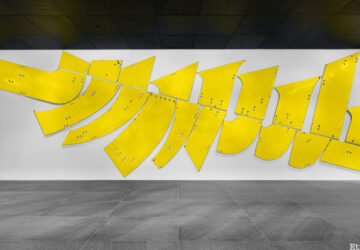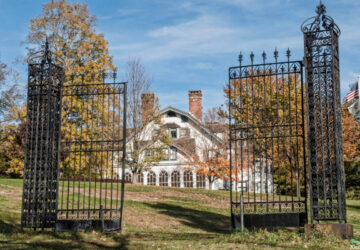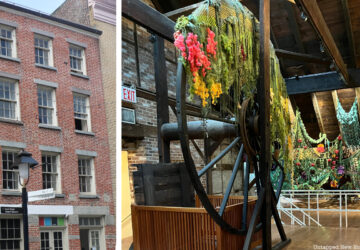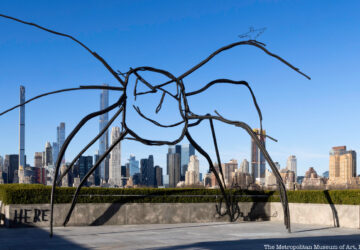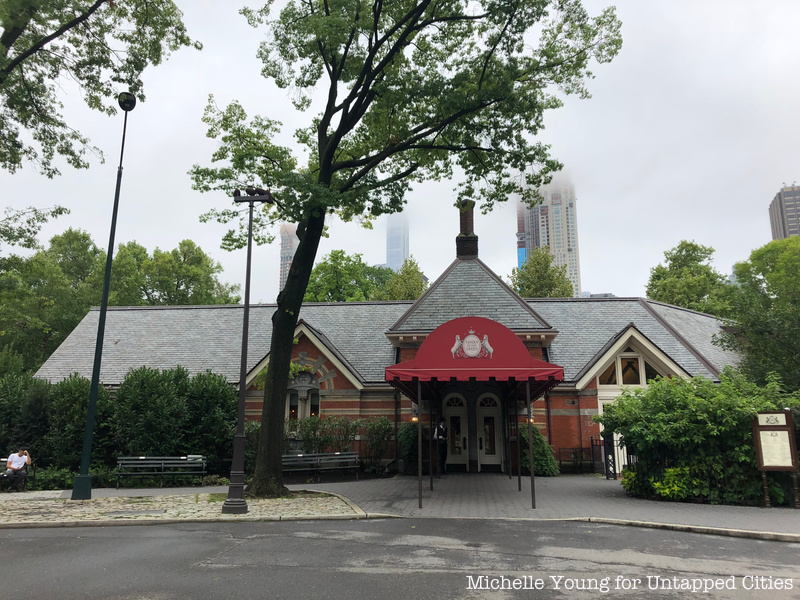2. Tavern on the Green, Former Sheepfold
Before Tavern on the Green was a restaurant, it was a sheepfold. Like many of our favorite Central Park sites today, the Victorian Gothic structure designed by Calvert Vaux and Jacob Wrey Mould wasn’t in the original plans for Central Park. It was eventually built in 1870. The polychromatic masonry on the facade, made of red brick with contrasting bands of white and gray gneiss, is a signature element of Mould’s work, and you can see this feature in many of his buildings. The most extreme use of this technique was in Mould’s design of the All Souls Unitarian Church on Park Avenue South. The 1855 church no longer exists, but it gained the nickname “Holy Zebra” because of its multi-colored stripes.
During the day, hundreds of sheep grazed on the fifteen acres of lawn at Sheep Meadow on Central Park’s west side. They slept in the sheepfold at night. In 1934, Parks Commissioner Robert Moses had the sheep relocated to Prospect Park in Brooklyn and converted their nighttime home to a restaurant. While the establishment has seen many renovations, additions, and different owners over the decades, it has always been called Tavern on the Green.
